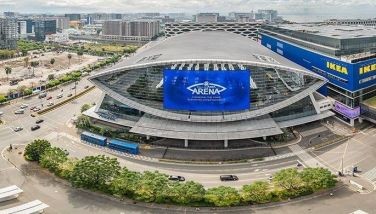The Panama Canal: A cool crossing
This is one experience of a lifetime — crossing the Panama Canal on a ship! The Panama Canal Authority (La Administración del Canal de Panamá or APC), an autonomous government entity, manages the waterway. This maritime 80-km. shortcut connects the Atlantic and Pacific Oceans in one of the narrowest points of the isthmus of Panama and the American continent.
The two-lane Canal uses a system of locks that operate as water elevators, raising ships from ocean level to the level of Gatun Lake, 26 meters above sea level, allowing the crossing through the Continental Divide, and then lowering these ships to the sea level on the other side. These canals allow movement in both directions.
It takes a ship approximately nine to 10 hours to go through the locks. Depending on its size, a vessel pays the ACP a toll in advance. The Canal operates 24 hours a day, every day, processing 19,000 vessels annually, with revenues from US$5 to 6 million per day. Tolls range from US$0.36 (paid by a man who swam the Canal in 1928) to US$400,000 per ship. When the new canal opens in July this year, containers can pay up to US$1 million each— still a bargain comparing the cost of time and efficiency for vessels to go around the continent through Cape Horn. Every Panamanian dreams of working for the ACP, which employs 10,000 people to do the job.
The ship reaches the Caribbean side of Colombia. We were told that Colombia is a flower exporter, second only to Amsterdam. Aside from gold and silver, Colombia has coffee and emeralds or what has been called “green gold” because of its value.
Charming Cartagena, named in honor of Cartagena, Spain, is a UNESCO World Heritage Site. Founded in 1533 by Pedro de Heredia, it is one of the oldest cities of Colombia. The city (600 square kilometers) has a population of one million and is composed of islands connected by bridges.
Although warned to take extra care when joining a tour to the city and not to accept packages from anyone, I did not feel threatened. Of course, it really is a good idea not to wear jewelry. This way, the fingers, arms, neck and earlobes are free to try the emeralds on display.
Massive fortress walls protect 15,000 square kilometers of the old city. Built by the Spaniards from 1585 onward, the walls took over 200 years to construct and later rebuild, ravaged by storms and raided by pirates and pillagers.
Santa Marta, the third largest city of the Caribbean region of Colombia, is the capital of the Department of Magdalena. Founded by Rodrigo de Bastidos in 1525, it was the first Spanish settlement in Colombia and is one of the oldest cities in South America. A gold museum in the city center exhibits artifacts worn by early indigenous people.
Santa Marta honors Simon Bolivar, the great “Libertador,” with a museum about his life. He is revered by many South American countries as he fought for their freedom from Spanish rule. He died of tuberculosis at the young age of 47 in Quinta de San Pedro Alejandrino, near Santa Marta.
The Caribbean Sea is surrounded by over 7,000 islands as large as Cuba and as tiny as a coral reef in the Lesser Antilles.
And when we reached Jamaica, we made a stop.
The name “Jamaica” is said to have come from the indigenous Arawak Indian word “Xaymayca.” These Indians arrived on canoes via the Amazon River from Brazil and Venezuela. Because the Spaniards eradicated these gentle Arawaks, African slaves had to be imported to Jamaica to serve as field hands and nannies. Pirates (Blackbeard Edward Teach and Calico Jack Rackham) came and pillaged the available riches. Under British rule, the locals came to speak Creole — “Patua”— or what sounds like broken English.
A favorite among European colonial powers (including Columbus), Jamaica is still a beach destination for North Americans today. Personally, I felt that the place is very similar to the Philippines, with similar flowers, ferns and fruits. It was not worth paying tourist prices for unexciting souvenirs.
Our cruise continued on to Key West, the southernmost tip of the United States, and ended in Miami, Florida. “Exotic and intriguing” had transformed into “uniform and safe.” The contrast between the cities of the two Americas were, well, like north and south.
* * *
Tell me where to Walk the Talk: cecilialicauco2@gmail.com. Follow me on Instagram @cecilialicauco2




















